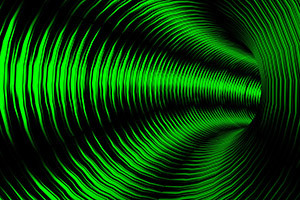DFG Research Unit to work on improving optical data transmission systems
Light signals in optical fibres can be used to transmit very large quantities of data very quickly with minimal disruption. For this reason, demand is growing for even more of their potential to be harnessed in infrastructure and industry, such as in the automotive and aviation industries. What should production processes look like in order to integrate systems which transmit data using light into existing components in the best possible way? This is the main research question that a newly established DFG Research Unit will be investigating. Researchers at FAU will play a key role in the Research Unit.
There are currently certain technical limitations in this area. For example, it is difficult to transmit the signal from one optical fibre to other optical fibres without it being lost in any of the fibres. The DFG Research Unit ‘Optische Aufbau- und Verbindungstechnik für baugruppenintegrierte Bussysteme’ (Optical integrated circuit packaging for module-integrated bus systems – OPTAVER) will be taking on these and other challenges.
An FAU sub-project will investigate the possibility of using precise aerosol jetting technology to print light transmitting materials onto surfaces with all kinds of shapes. In this process the polymers used as the basic materials for the optical fibres are atomised and sprayed onto the supporting material’s surface using a jet of air. This allows optical fibres to be put onto surfaces of any shape. This simplifies the connection of devices with optical data transmission systems, for example, as they can simply be printed on with the polymer inks.
In another sub-project FAU researchers will use computers to investigate whether the light signal reaches the desired node without any disruptions. To do this they will use ray tracing to simulate the attenuation of the light signal within a specific part of the optical fibre. A connected construction programme will be used to carry out specific optimisation on the three-dimensional course of the optical fibre, as well as its cross-sectional profiles. The results showing suitable shapes for successful data transmission will be incorporated into design rules for optical fibres, meaning that no more simulations are necessary when they are applied in industry.
As part of the national research project OPTAVER, FAU’s Chair of Manufacturing Automation and Production Systems, and the working group Optical Design, Measurement and Micro Optics (ODEM) at FAU’s Institute of Optics, Information and Photonics will be working on solving existing problems regarding signal transmission in bus systems. Leibniz Universität Hannover, Laser Zentrum Hannover and TU Dresden are also involved in the project. The German Research Foundation (DFG) is funding the Research Unit with a total of 1.35 million euros for a period of three years.
Further information:
Prof. Dr. Jörg Franke
Phone: +49 9131 8527971
joerg.franke@faps.fau.de
